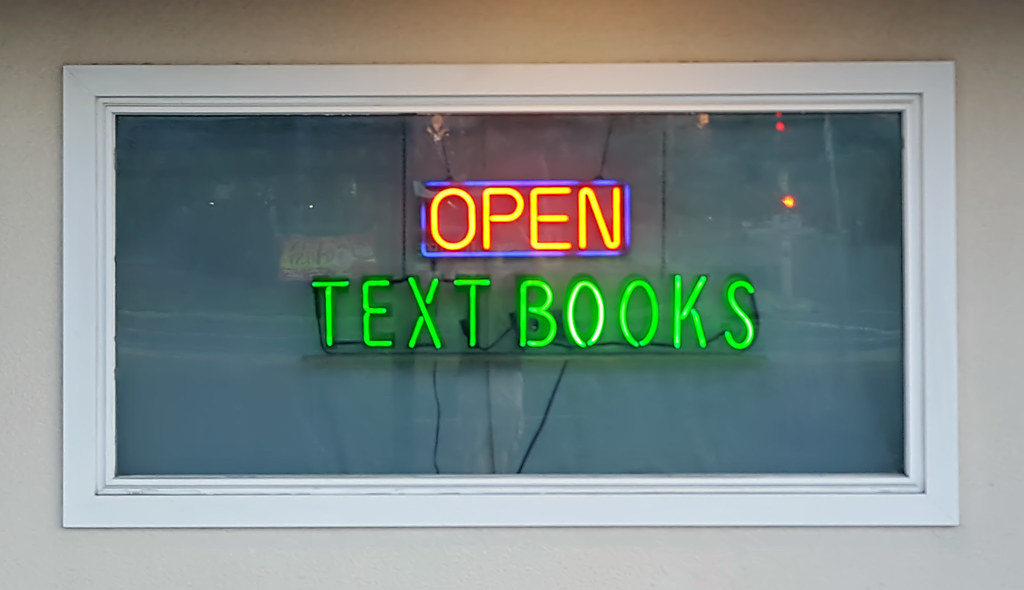On July 16th, one of the largest publishers of college textbooks in the world announced it will soon switch to a ‘digital-first’ publication structure that will prioritize the majority of its 1500-title catalog within a new subscription-based online portal. Once finalized, Pearson’s shift will aim to bypass the long-developed secondary market for college textbooks in a manner that has been compared to the successful capture by Netflix, Hulu, and other streaming services of once-thriving DVD resales.
For years, college students have raised concerns about the exorbitantly high-priced textbook market. Over the last decade, textbook prices have risen four times faster than the rate of inflation, often costing students hundreds of dollars each semester. A report published in September 2018 indicated that more than two in five college students had chosen to skip meals at some point in the semester so that they might afford textbooks. With university costs already playing a significant role in the current presidential election cycle (several Democratic candidates, such as Elizabeth Warren and Bernie Sanders, have made their positions on higher education a central part of their messaging), it makes sense that textbook publishers like Pearson would want to be proactive in seeking a solution.
As costs have risen, a variety of practices have already developed to try and make course materials more accessible for students, such as the purchasing of used and resold copies of older textbook versions on the secondary market – as well as the growing practice of digital piracy for assigned course materials. In recent years, various methods have been tried to curb illegal textbook downloading, from requiring digital keys to access online materials, integrating scannable “approval seals” that can be tracked by publishing houses, and working with institutions to develop ‘custom’ textbooks for particular courses. One proposal, institutional licensing, aims to offload responsibility for digital textbook distribution to universities; publishers would collect an up-front fee from the college, who would then be able to make the textbooks available to particular students. Perhaps the most successful endeavor for maintaining publisher profits thus far, however, has been the rise of the textbook rental market – though this comes with a variety of problems of its own.
On the other hand, students and activists have proposed a variety of measures to benefit students more directly, including the promotion of buy-back programs, calls for ‘open textbooks’ published under fair-use restrictions (click here for an example of one such textbook), and protective legislation like the Affordable College Textbook Act. Although Congress has repeatedly earmarked temporary funding to encourage the adoption of open textbooks, the ACTA aims to establish permanent programs and reports to track and combat high textbook prices, as well as to strengthen transparency requirements for textbook prices when students register for classes. Though it has been introduced repeatedly since 2013, the ACTA has not yet been put to a vote.
It remains to be seen, then, what Pearson’s subscription-based model will do for struggling students. In some ways, lowering up-front prices via a simple catalog subscription model may end up lowering costs for students overall (especially if such a product can be bundled or administered at an institutional level). Certainly, a digital-first structure will make it far easier for Pearson to update textbooks to new editions. Additionally, the lowered environmental costs of promoting ebook usage on a wider scale are a significant factor to weigh in this debate as well.
However, even if initial costs are lower (digital copies of textbooks are typically less expensive than printed versions), because students will have no option to resell their unwanted used textbooks at the end of their classes, overall costs for students may actually rise. Certainly, requiring subscription access to Pearson’s database will not only preclude textbook resales, but it will prevent several other tricky techniques for keeping student fees low – such as professors intentionally assigning older, less-expensive, versions of newly-updated textbooks.
In a wider sense, Pearson’s subscription model is simply consistent with moves already familiar in the digital entertainment space, as well as for professional-based software products like Microsoft Office and the Adobe suite. As access-based consumption has become industry-standard for music labels and movie studios, it may only be a matter of time before book publishers follow suit. This will continue to bring to the fore important philosophical points about what it truly means to ‘own’ an ebook (as well as other concerns about censorship, for better and for worse), even if regular users of streaming services like Spotify and Netflix are less concerned about such murky questions than they are about simply being able to load up needed content on-demand.
Of course, this is all without mentioning the potentially detrimental effect that ebooks have on reading comprehension – a particularly pernicious possibility for educational reading materials.
There is much that the age of the internet has changed about how we access information; it remains to be seen whether converting textbook access to a streaming-subscription model will be a Netflix-level success or not.

